Abstract
1. The β-adrenoceptor blocking activity of 1-isopropylamino-3-(4-indanoxy)-2-propanol HCl (USVC 6524) was determined in the anaesthetized dog, the isolated rat uterus and the isolated guinea-pig tracheal strip.
2. USVC 6524 inhibited the positive inotropic, positive chronotropic and vasodilator responses to isoprenaline in the dog in a dose of 10 μg/kg and higher. On the basis of comparative pA2 values, USVC 6524 is approximately 10 times more potent as a β-adrenoceptor antagonist than propranolol.
3. Cardiac depressant effects produced by USVC 6524 were relatively mild and occurred only after the onset of a strong β-adrenoceptor blockade.
4. USVC 6524 also blocked β-adrenoceptors in the isolated rat uterus and guinea-pig tracheal spiral strip.
Full text
PDF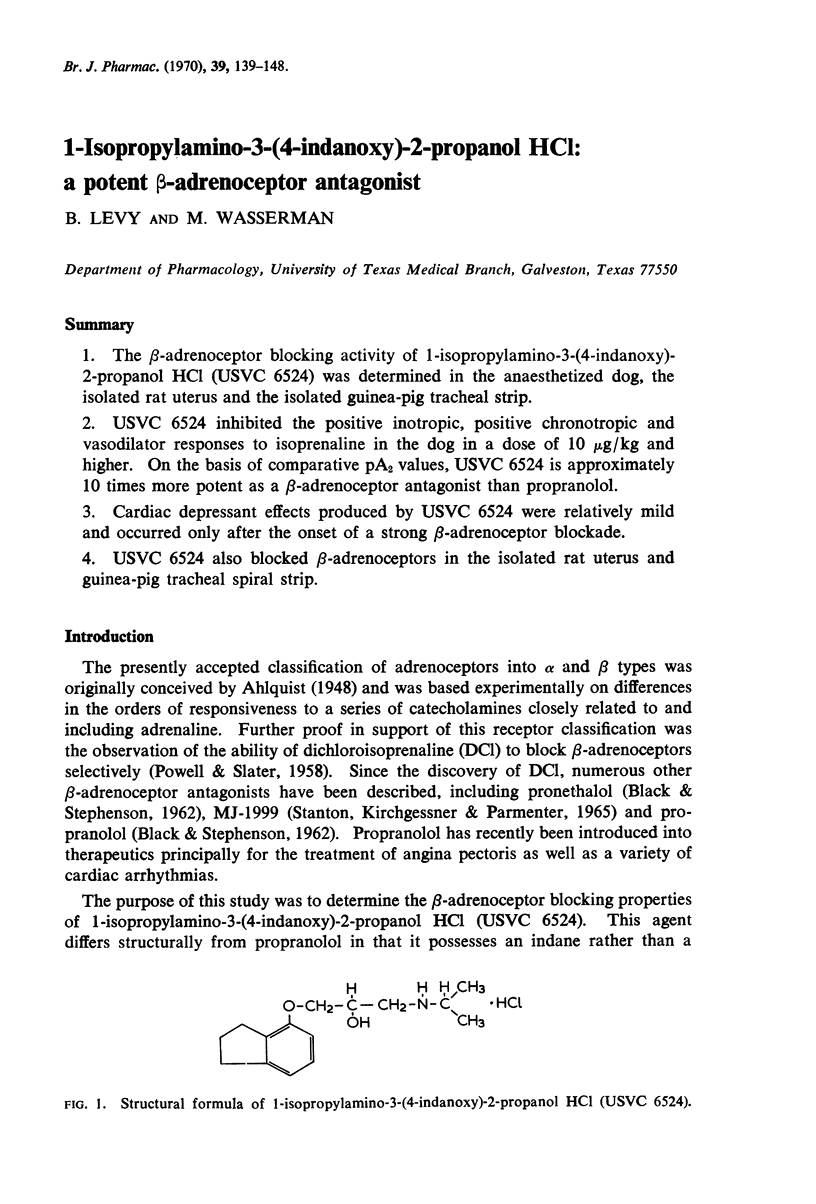
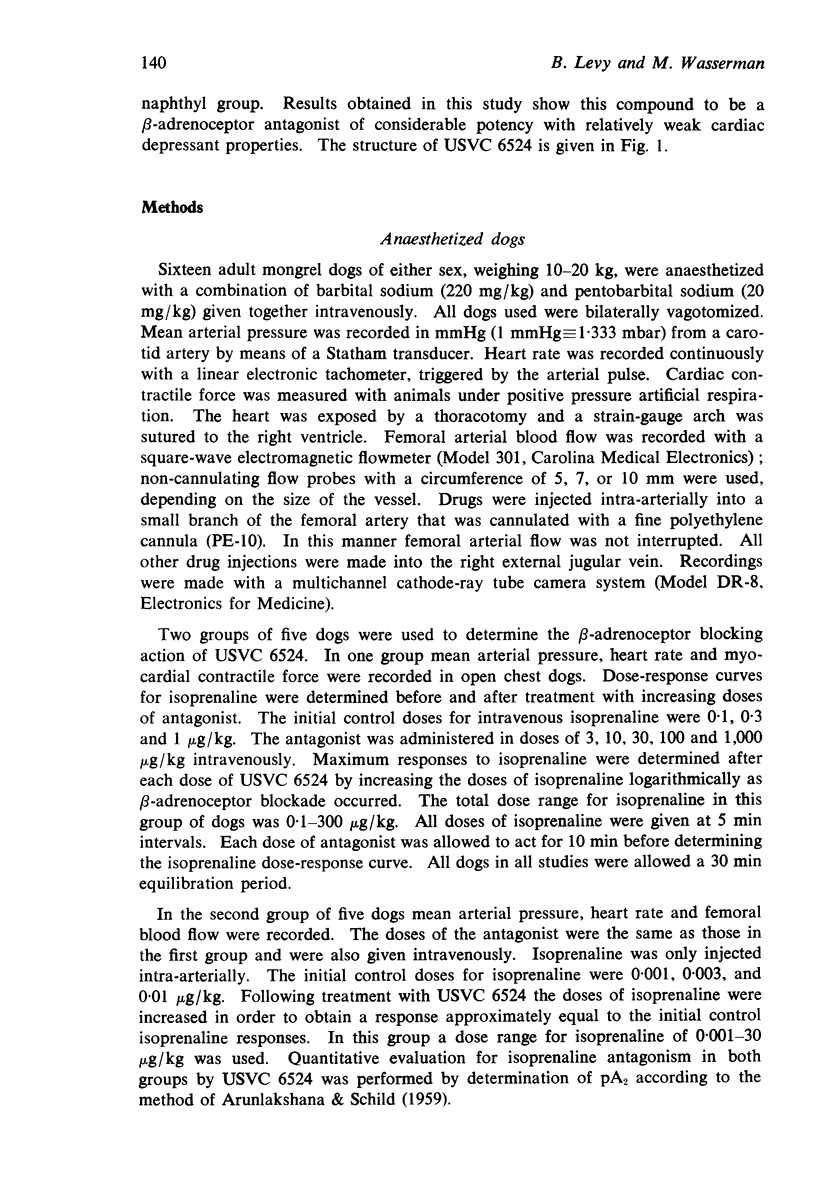
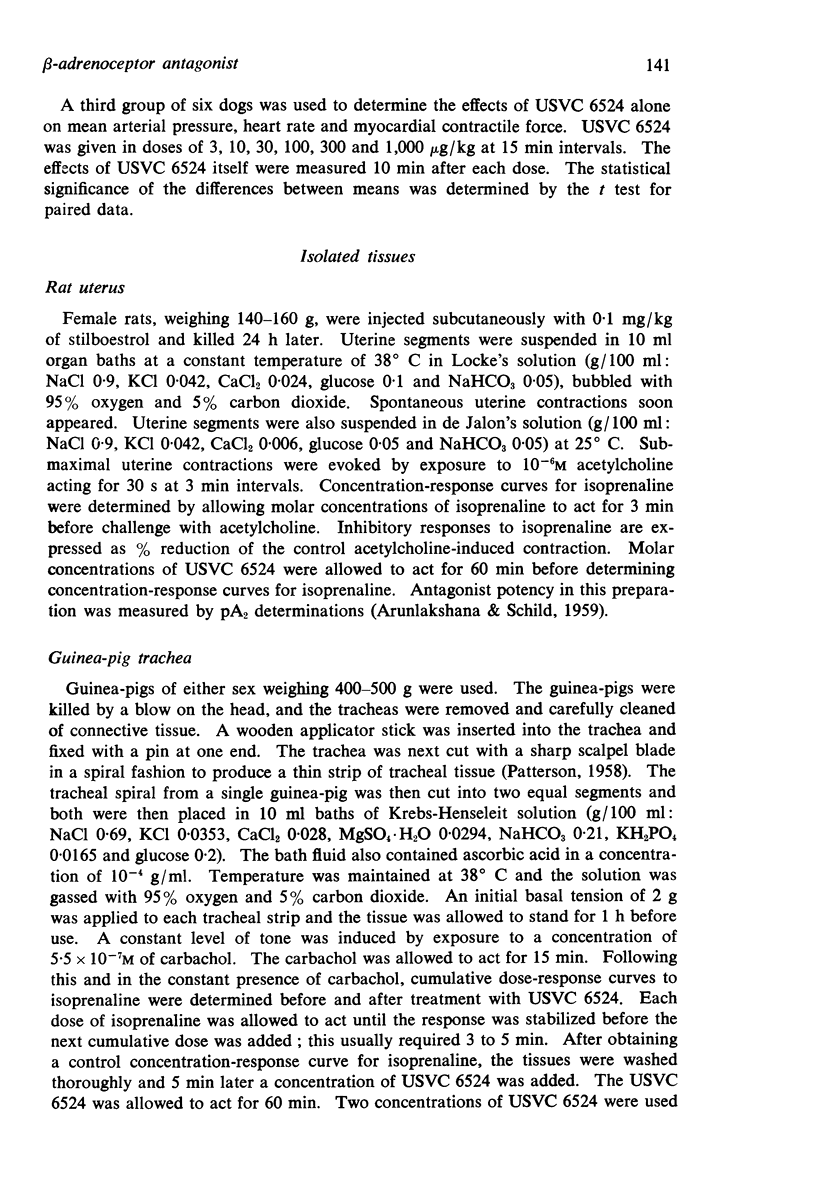
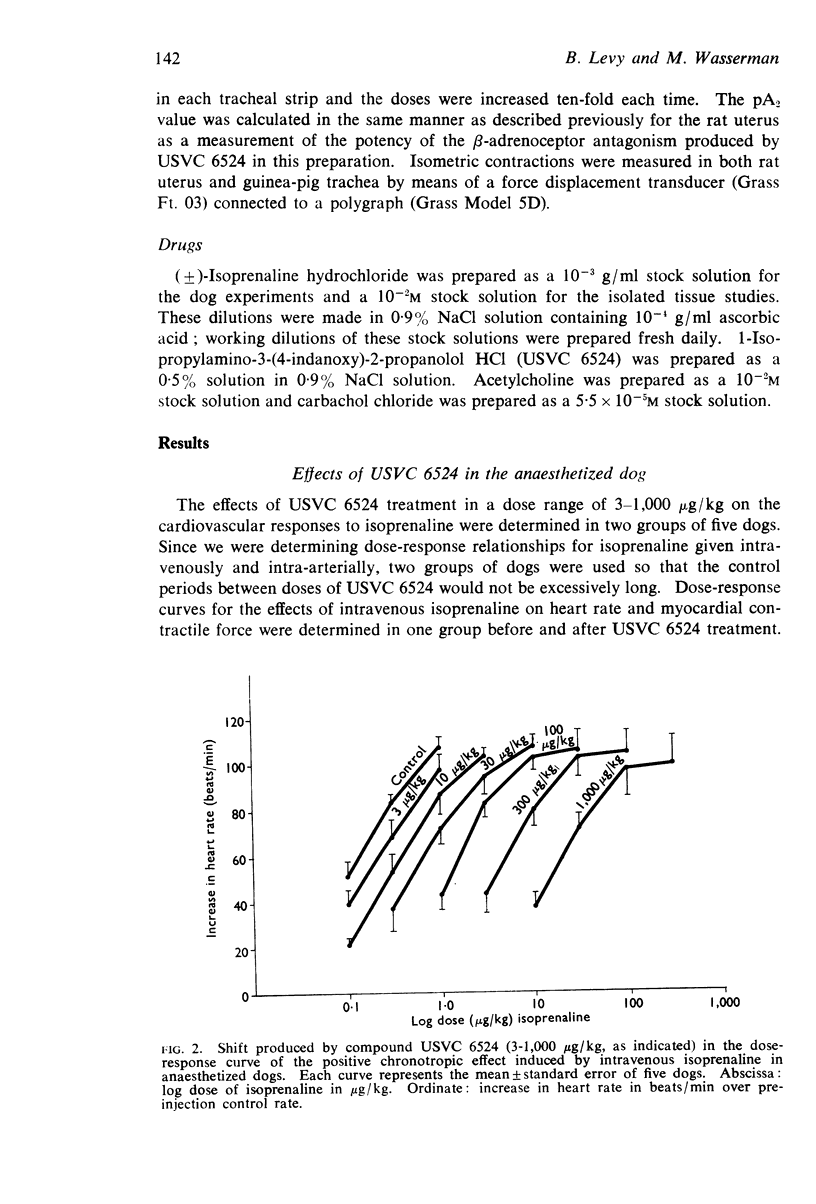
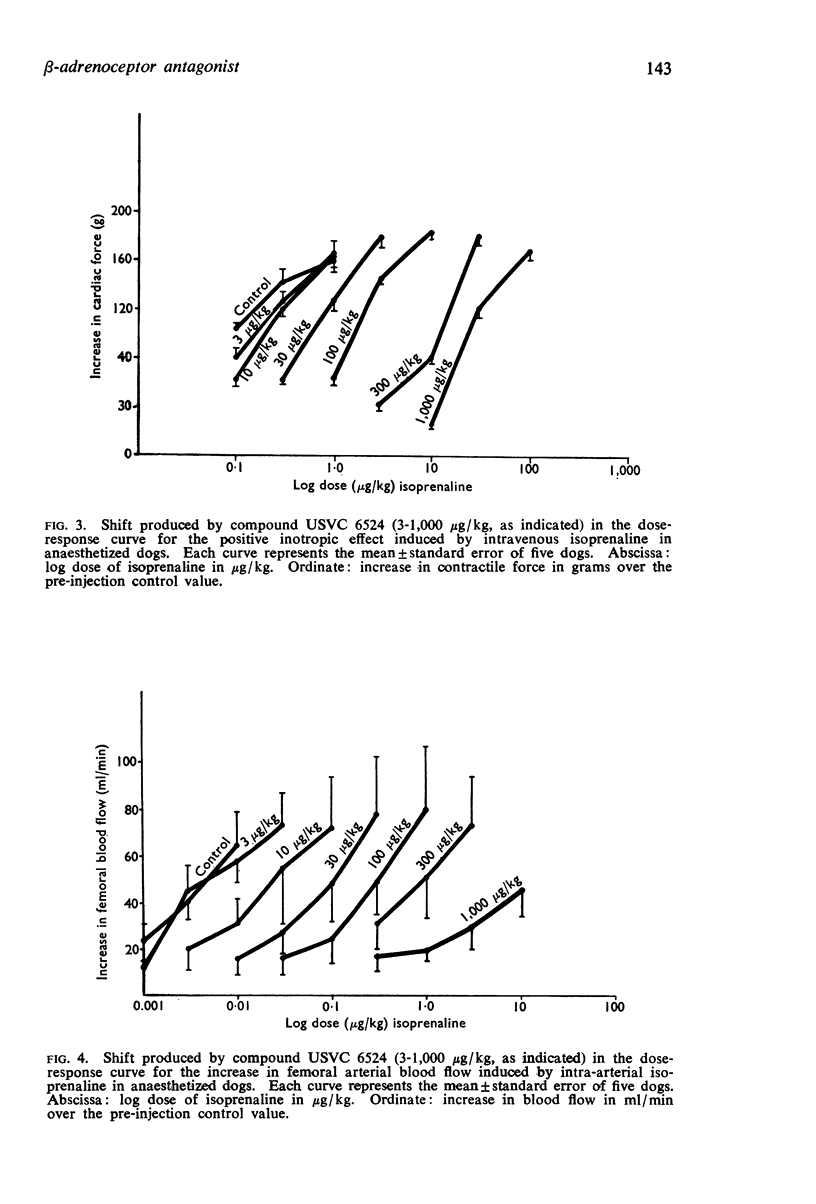
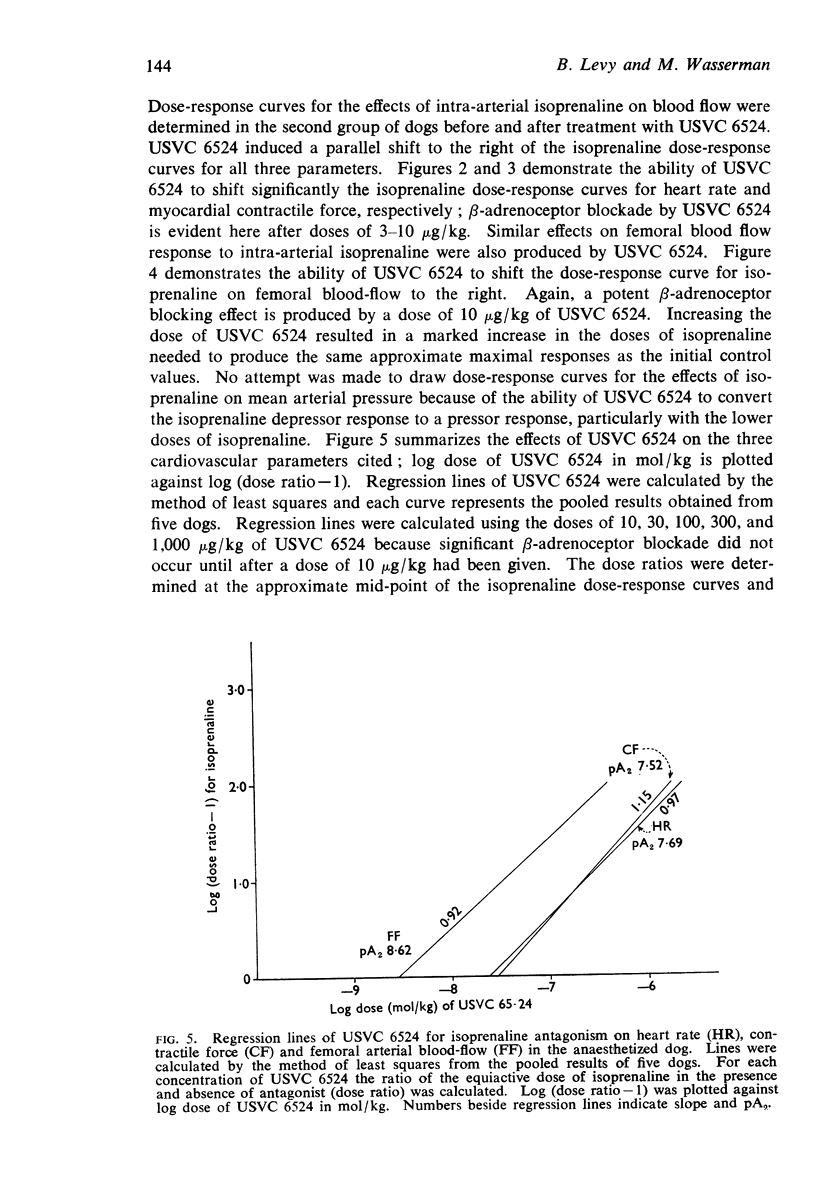
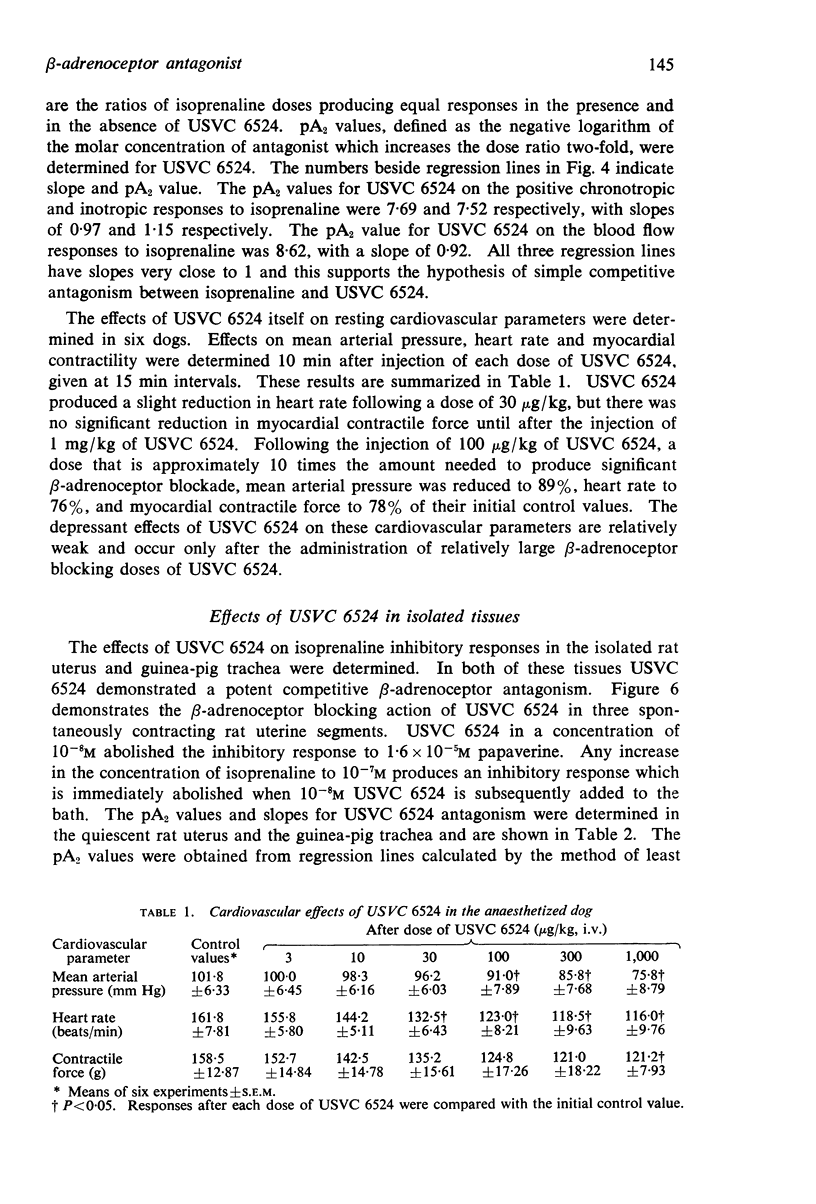
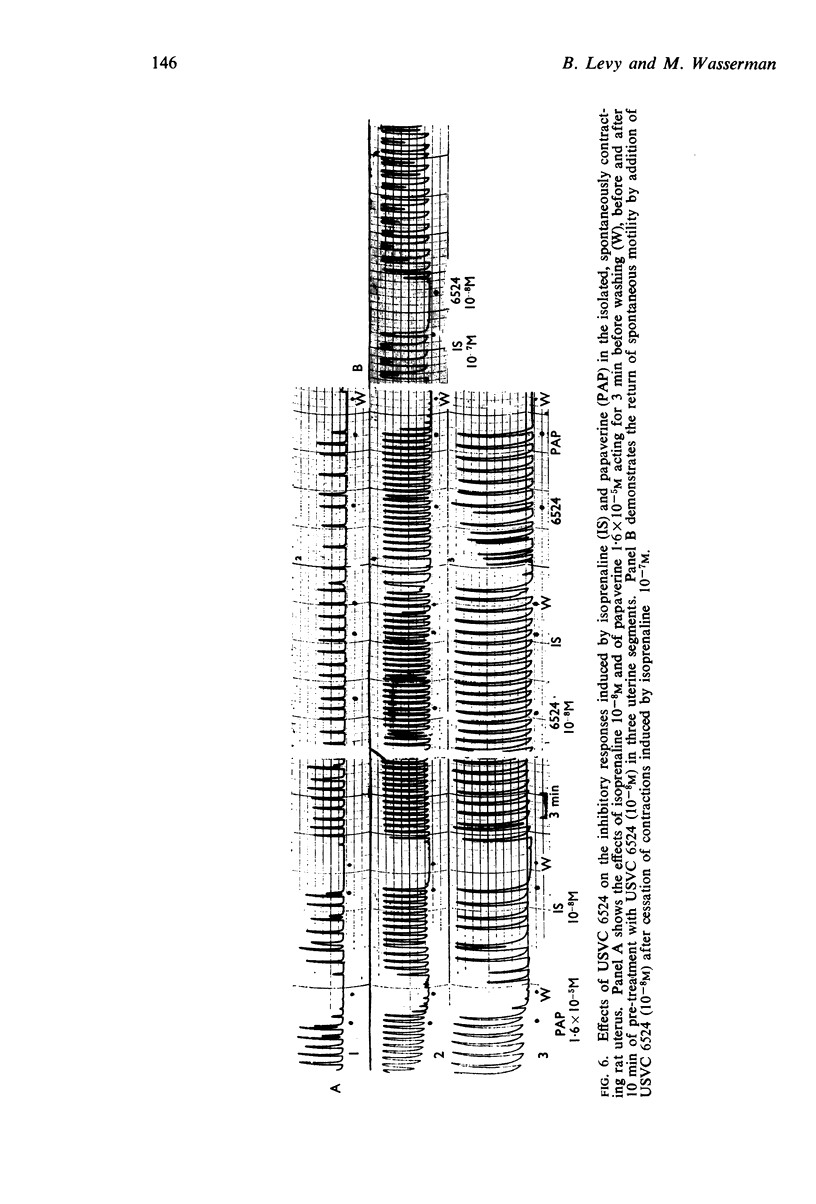
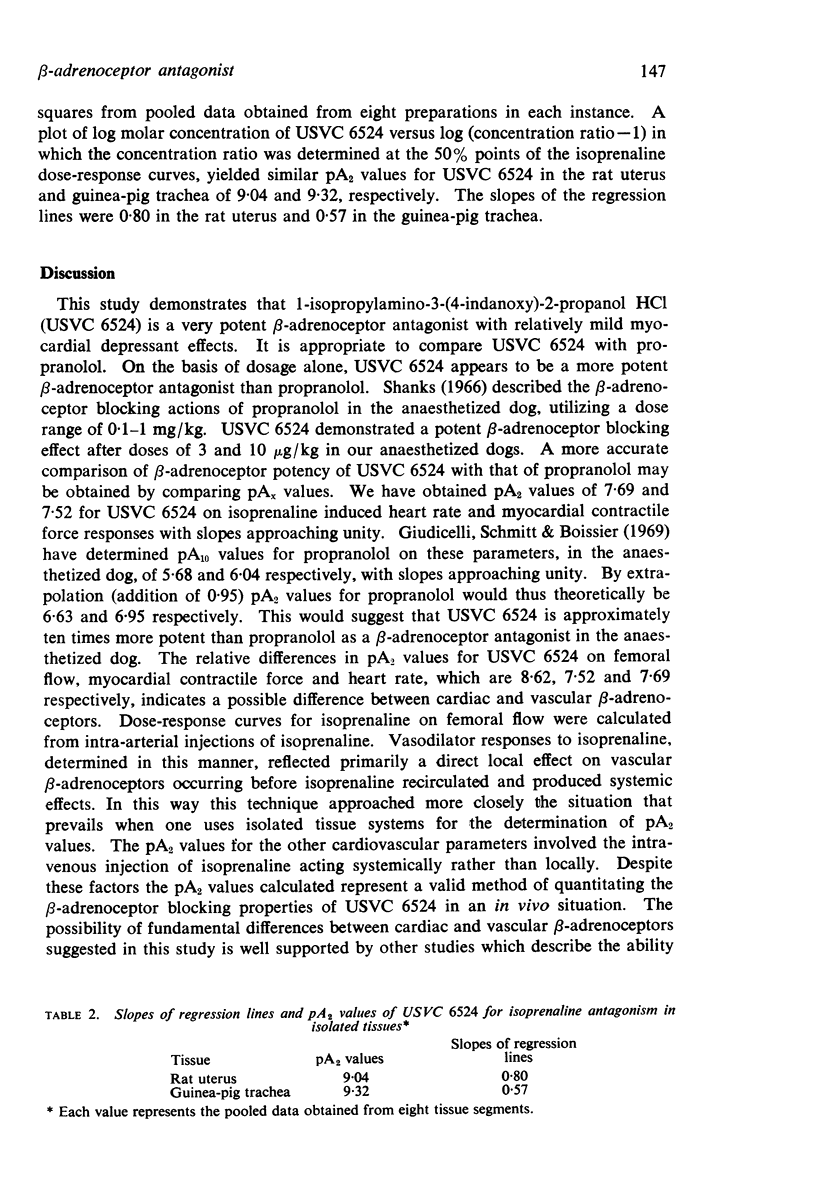
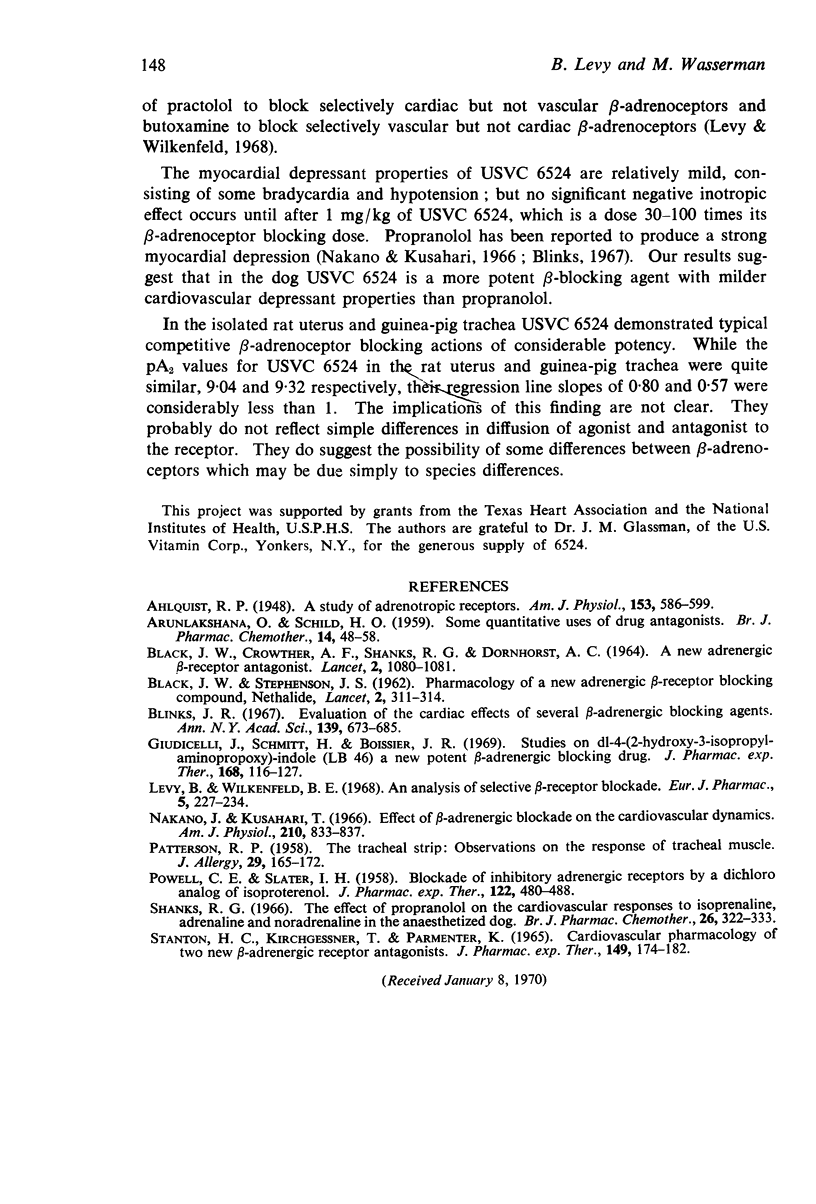
Selected References
These references are in PubMed. This may not be the complete list of references from this article.
- ARUNLAKSHANA O., SCHILD H. O. Some quantitative uses of drug antagonists. Br J Pharmacol Chemother. 1959 Mar;14(1):48–58. doi: 10.1111/j.1476-5381.1959.tb00928.x. [DOI] [PMC free article] [PubMed] [Google Scholar]
- BLACK J. W., CROWTHER A. F., SHANKS R. G., SMITH L. H., DORNHORST A. C. A NEW ADRENERGIC BETARECEPTOR ANTAGONIST. Lancet. 1964 May 16;1(7342):1080–1081. doi: 10.1016/s0140-6736(64)91275-9. [DOI] [PubMed] [Google Scholar]
- BLACK J. W., STEPHENSON J. S. Pharmacology of a new adrenergic beta-receptor-blocking compound (Nethalide). Lancet. 1962 Aug 18;2(7251):311–314. doi: 10.1016/s0140-6736(62)90103-4. [DOI] [PubMed] [Google Scholar]
- Blinks J. R. Evaluation of the cardiac effects of several beta adrenergic blocking agents. Ann N Y Acad Sci. 1967 Feb 10;139(3):673–685. doi: 10.1111/j.1749-6632.1967.tb41237.x. [DOI] [PubMed] [Google Scholar]
- Giudicelli J. F., Schmitt H., Boissier J. R. Studies on dl-4-(2-hydroxy-3-isopropylaminopropoxy)-indole A/Giudicelli JF, Schmitt H, Boissier JR: Studies on dl-4-(2-hydroxy-3-isopropylaminopropoxy)-indole (LB 46), a new potent beta adrenergic blocking drug. J Pharmacol Exp Ther. 1969 Jul;168(1):116–126. [PubMed] [Google Scholar]
- Levy B., Wilkenfeld B. E. An analysis of selective beta receptor blockade. Eur J Pharmacol. 1969 Feb;5(3):227–234. doi: 10.1016/0014-2999(69)90142-3. [DOI] [PubMed] [Google Scholar]
- Nakano J., Kusakari T. Effect of beta adrenergic blockade on the cardiovascular dynamics. Am J Physiol. 1966 Apr;210(4):833–837. doi: 10.1152/ajplegacy.1966.210.4.833. [DOI] [PubMed] [Google Scholar]
- POWELL C. E., SLATER I. H. Blocking of inhibitory adrenergic receptors by a dichloro analog of isoproterenol. J Pharmacol Exp Ther. 1958 Apr;122(4):480–488. [PubMed] [Google Scholar]
- Shanks R. G. The effect of propranolol on the cardiovascular responses to isoprenaline, adrenaline and noradrenaline in the anaesthetized dog. Br J Pharmacol Chemother. 1966 Feb;26(2):322–333. doi: 10.1111/j.1476-5381.1966.tb01911.x. [DOI] [PMC free article] [PubMed] [Google Scholar]
- Stanton H. C., Kirchgessner T., Parmenter K. Cardiovascular pharmacology of two new beta-adrenergic receptor antagonists. J Pharmacol Exp Ther. 1965 Aug;149(2):174–182. [PubMed] [Google Scholar]


